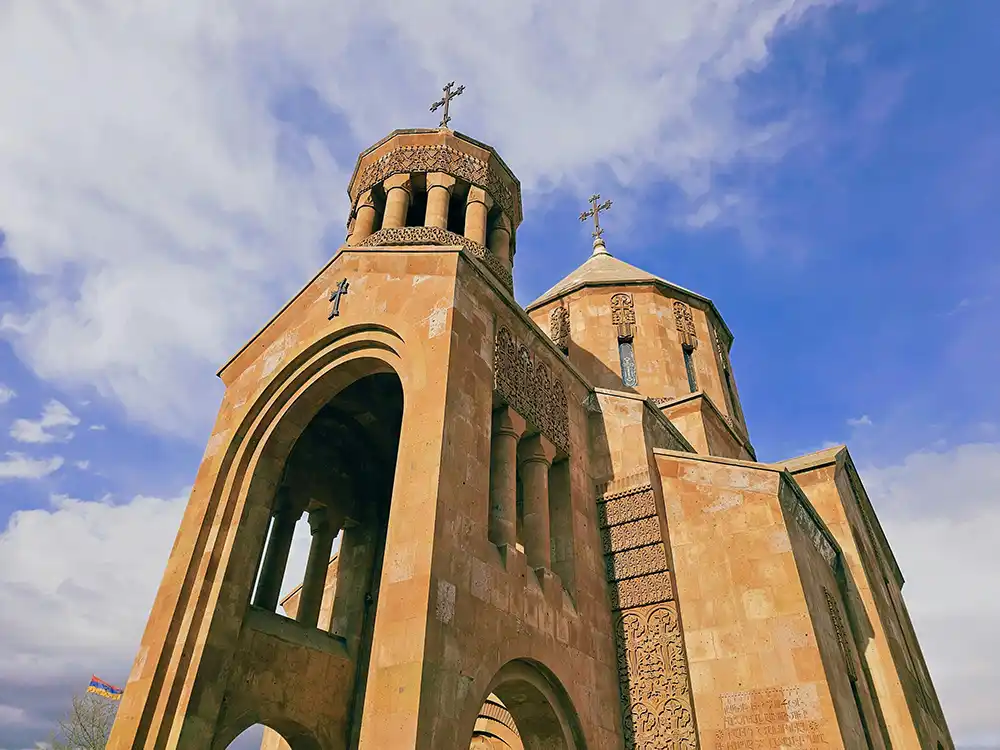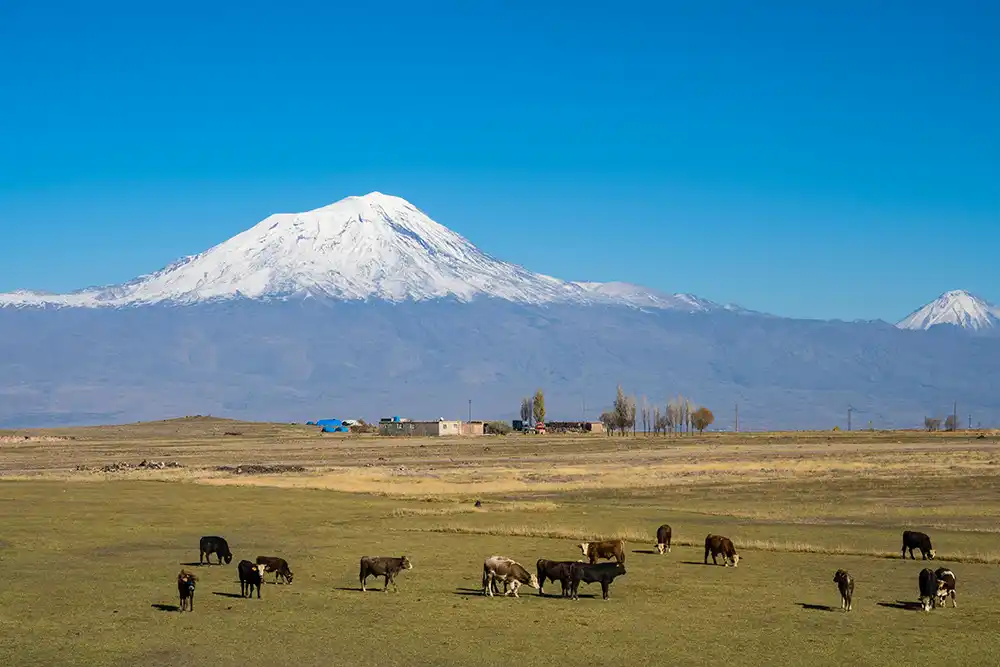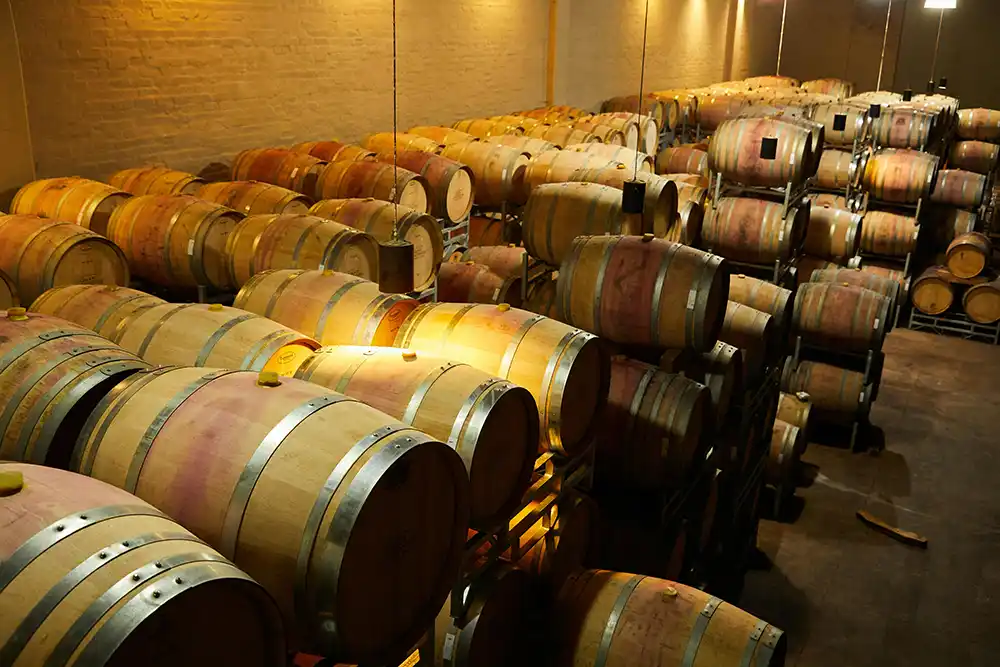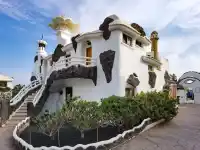It all started with one completely innocent evening and a bottle of cognac. We debated the difference between cognac and brandy, whether the French designations VS, VSOP, and XO were truly meaningful or just snobbery, and whether there might be something just as good somewhere in the world—only less pretentious. And so came the crazy idea: an expedition for the Caucasian liquid gold, in other words, for Armenian and Georgian brandy.

Yerevan
Our first steps led us to Armenia, a country that treasures its brandy so deeply, it considers it a part of its cultural heritage. The Armenian capital, Yerevan, is one of the oldest continuously inhabited cities in the world. Founded in 782 BC, it predates Rome. The heart of the city is Republic Square—huge, with grand buildings in Soviet neoclassical style, leaving no doubt that you’re in the post-Soviet world.
Be sure to discover the Cascades. This monumental complex of terraces and stairways is a symbol of Yerevan. You’ll find an amazing view of the city, and on a clear day, you might even catch a glimpse of the majestic, snow-capped peaks of Mount Ararat. Inside the complex is the Cafesjian Center for the Arts, featuring modern art and sculptures scattered throughout the grounds.
Matenadaran – a temple of knowledge and archive of ancient manuscripts – supposedly holds treasures found nowhere else. It preserves over 17,000 ancient texts, including medieval medical and astronomical manuscripts. If you love history and books, this place will enchant you. And don’t skip the Vernissage market—the largest flea market in Armenia, offering everything from antiques and handwoven carpets to traditional jewelry, artwork, and Soviet artifacts. If you want an authentic souvenir, this is the place. Just don’t ask us how to get it onto the plane.

Radio Yerevan
For those of us born earlier, Yerevan is perhaps most famous for Radio Yerevan and top-notch cognac (or rather, brandy). Do you remember the old Radio Yerevan jokes? This fictional broadcast became the basis for many jokes during the socialist era. Known for their distinctive Q&A format, these jokes satirized everyday life and the political situation in socialist countries:
“Is it true that they’re giving away cars for free on Red Square in Moscow?”
“In principle, yes, but with some modifications: not in Moscow but in Leningrad; not on Red Square but Palace Square; not cars but bicycles; and they’re not giving them away—they’re stealing them.”
“Is it true that conditions in Soviet labor camps are excellent?”
“In principle, yes. Five years ago, one of our listeners questioned it and was sent to investigate. It seems he liked it so much, he hasn’t returned.”
“Is it true that the USSR is the most progressive country in the world?”
“Of course! Life there was better yesterday than it will be tomorrow!”
“Is it true that no one in the USSR misses stereo systems?”
“In principle, yes. You hear the same thing from all sides.”
“Is it true that Adam and Eve were the first communists?”
“Probably yes. They dressed modestly, had simple dietary needs, never owned a home, and believed they lived in paradise.”
These jokes served as a subtle form of resistance and humor during a time when open criticism of the regime could land you in one of those labor camps. Have you heard of Ján L. Kalina? When his book was first published in 1969, it infuriated the Slovak communists so much they imprisoned him. His book A Thousand and One Jokes (subtitled A Textbook of Joking and Satirism) became the most sought-after banned book for twenty years and remains one of the best books on humor ever written in Czechoslovakia.

The Armenian Brandy Mecca
First, we visited the legendary Yerevan Brandy Company, where the famous Ararat brand is made. It’s said that Winston Churchill drank Armenian brandy Dvin daily, a gift from Stalin. Allegedly, after the first bottle, he stopped trusting his own generals, and after the second, he had a solution for the Cold War. Naturally, we decided to try everything from Ararat VS (2 years) to Ararat Nairi (20 years)—because research is research. But that’s as far as we got. We seen 30 years old, 50 years old, and our hearts broke. We knew we wouldn’t get to taste that.
When we asked what the difference is between VS, VSOP, and XO, an old master distiller simply waved his hand and said:
“The young one is like a hot summer night, the old one like the wisdom of mountains.”
After the third glass, this poetry made perfect sense.
But what’s the actual difference?
Main Cognac Categories:
- VS (Very Special) – The youngest brandy, with the youngest component aged at least 2 years in oak barrels. Typically fresh and fruity with light oak notes.
- VSOP (Very Superior Old Pale) – The youngest element must be at least 4 years old. More mature, smoother, and more complex than VS, often with notes of vanilla, spices, and dried fruit.
- XO (Extra Old) – The youngest spirit in the blend must be at least 10 years old (previously 6 before 2018). Richer and smoother, with deep notes of caramel, cocoa, nuts, and oak.
- Napoleon – Technically between VSOP and XO, requiring at least 6 years of aging. Often used as a premium VSOP.
- XXO (Extra Extra Old) – A relatively new category, requiring a minimum age of 14 years. Very rich and luxurious.
- Hors d’Âge – Literally “beyond age.” Used for ultra-premium cognacs aged 20 years or more.

Noah Brandy Company – In Pursuit of Armenian and Georgian Brandy
Our next stop was the Noah Brandy Company. Here, Armenians explained that when Noah landed on Mount Ararat, he didn’t plant trees—he planted vines, thereby beginning the region’s winemaking tradition. And since Armenians don’t do things halfway, their brandy is considered one of the best alternatives to French cognac. Note: It’s often sold under the brand name NOY.
Tbilisi: Georgia’s Answer to Cognac
With a mild headache and deep respect for Armenian craftsmanship, we (at least in spirit and with a finger on the map) moved on to Georgia. Although wine is more celebrated here, Georgian brandy is also worth a sin.
Everyone recommends starting in Tbilisi, where you can sample Sarajishvili, founded in 1884 and considered Georgia’s ambassador to the world of spirits. Their VS, VSOP, and XO versions are as sophisticated as the French, but with their own raw soul. When we asked a sommelier in Yerevan about the difference between Georgian and Armenian brandy, he thought for a moment and said:
“Armenian is like classical music, Georgian is like jazz – unexpected but brilliant.”
Next, head to Askaneli Brothers. Here, they craft carefully aged brandy, up to 30 years old. They also offer Napoleon brandy, a category we had previously dismissed as a bonus between VSOP and XO. We tasted it only once we got home—and agreed that this “Napoleon” deserved its own empire.

Finale: Which One is Better?
Armenian and Georgian Brandy. After multiple tastings, conversations with guides and sommeliers, and thoroughly testing our liver’s resilience, we reached the only logical conclusion: there’s no way to decide which is better.
Armenian brandy is elegant, smooth, and refined, with a long finish—truly reminiscent of good French cognac. Georgian brandy is bolder, wilder, with a playful mix of woody and fruity notes. Each has its soul, its own place.
So we returned home with a suitcase full of memories (bottles won’t make it on the plane) and a liver that filed its resignation after a few days. But it was worth it—after all, who else can say they traveled the Caucasus just to answer a question they made up over a drink?





